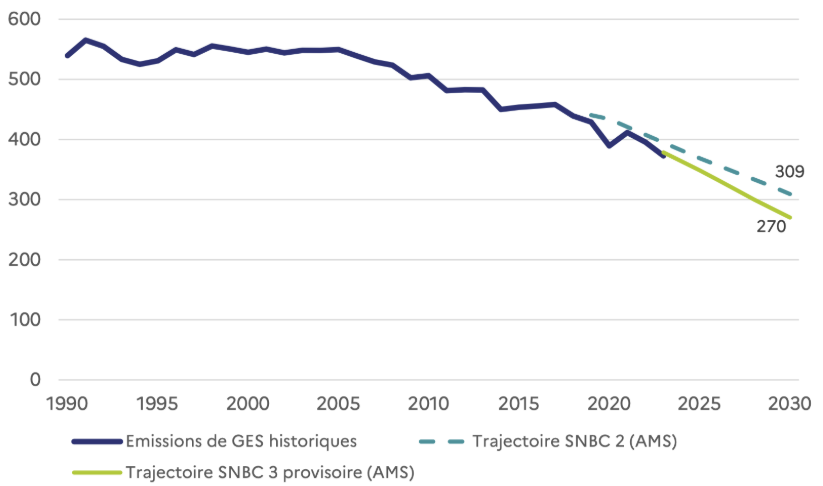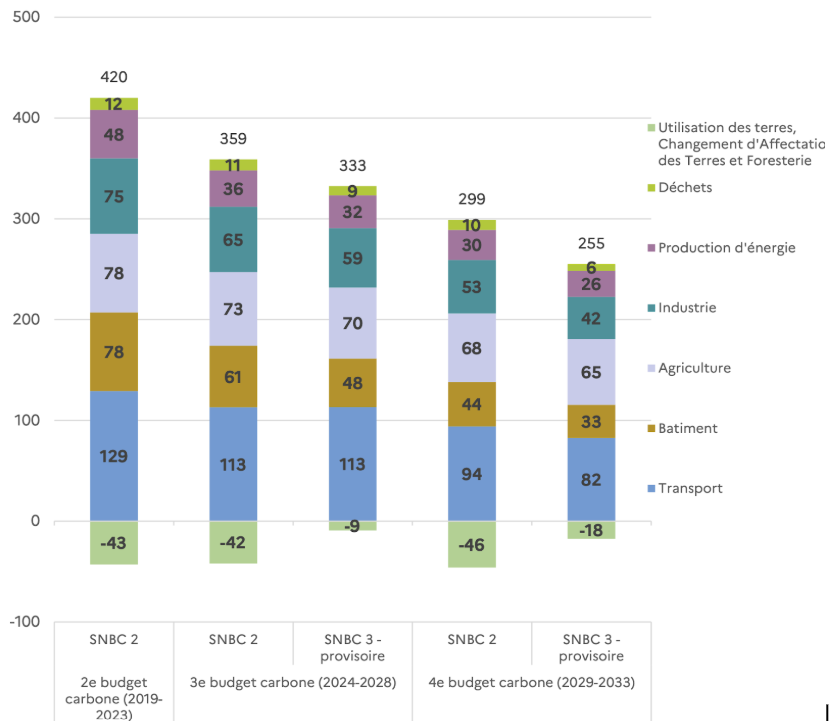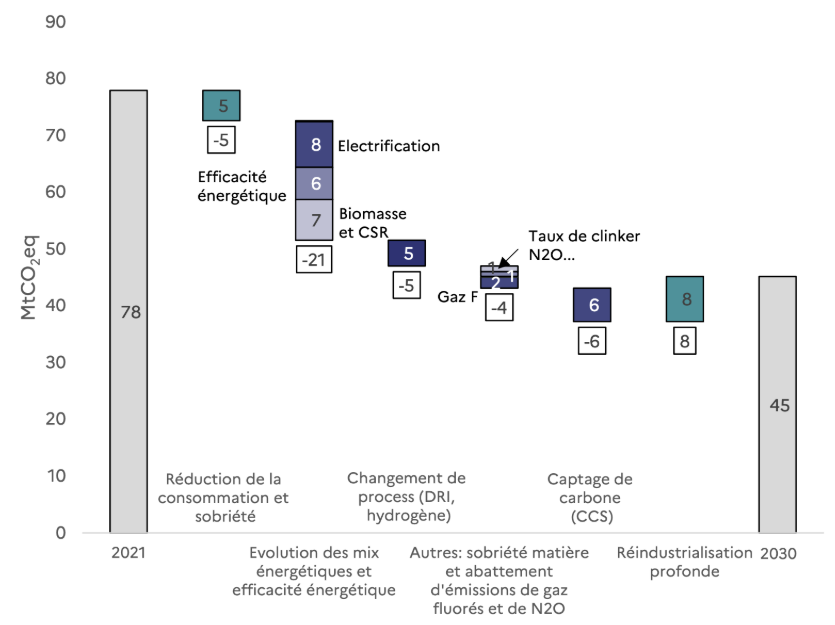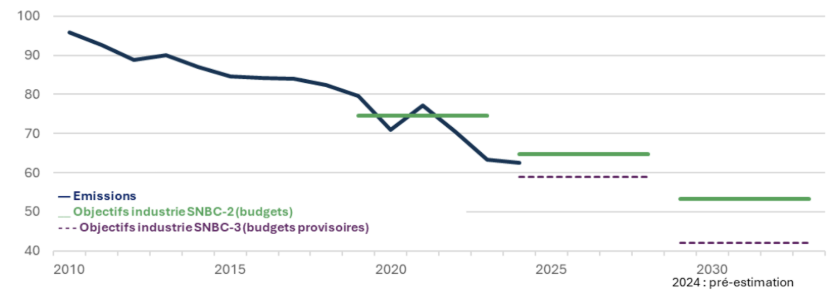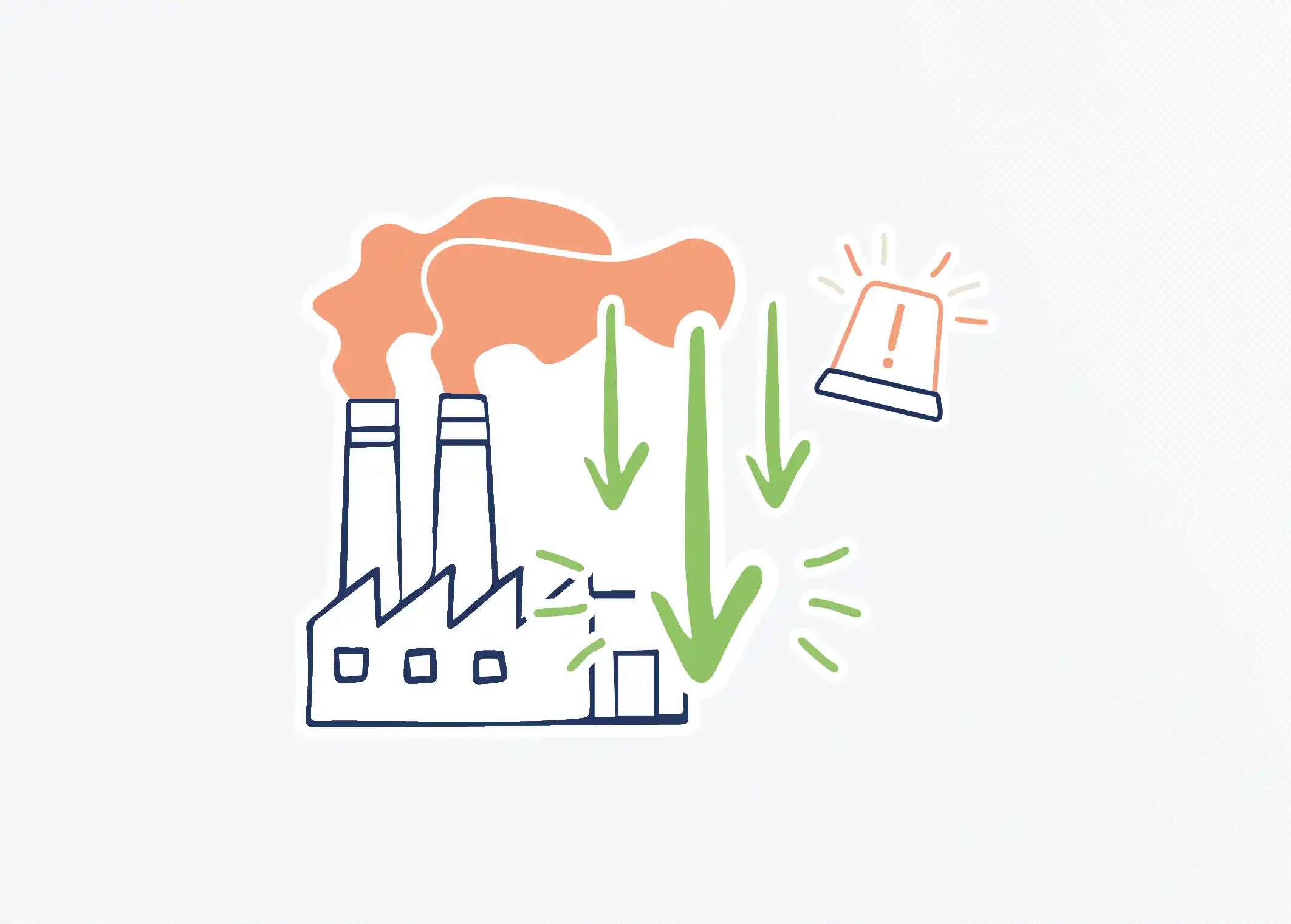
National Low-Carbon Strategy and adoption of SNBC 3
The upcoming adoption of SNBC 3
The National Low-Carbon Strategy (SNBC) is France’s roadmap to fight climate change. It was first adopted in 2015, then revised in 2020. In 2023, the French government began preparing SNBC 3, integrating the new European framework of the Fit-for-55 package and theGreen Deal (pacte vert). A public consultation was launched at the end of 2024 with the goal of finalizing the document in 2025. This timeline may be difficult to meet, as the adoption of the PPE 3 (Multiannual Energy Programming, defining the country’s energy policy goals), which must inform the SNBC 3 scenarios, is taking much longer than expected.
SNBC 3 is based on the following key elements:
- The goal of achieving carbon neutrality by 2050 and reducing the carbon footprint of the French population. It should be noted that the carbon footprint includes imported emissions, whereas carbon neutrality is assessed based on national territory emissions.
- A target trajectory to reach this goal.
- Average greenhouse gas emission caps for five-year periods, known as carbon budgets, adopted by decree.
- Public policy guidelines and monitoring indicators.
I want to decarbonize my industry
SNBC 3: a necessary reassessment of the objectives of the National Low Carbon Strategy
SNBC 2 sets a target of a 40% reduction in greenhouse gas emissions by 2030 compared to 1990. Since then, the European Union has adopted the Green Deal and its carbon neutrality objective. France, aligning with this trajectory, now sets a goal of at least a 50% reduction in GHG emissions by 2030 compared to 1990.
GHG Emissions excluding land sector
(observed and projected, in MtCO₂e)
AMS: “With Additional Measures” scenario, meaning the implementation of measures aimed at decarbonizing
Source: National greenhouse gas emissions inventory, Citepa, Secten 2024; DGEC modeling (elements presented in the SNBC 3 draft submitted for public consultation in late 2024)
To meet this new target, France will need to step up its efforts. Until 2030, emissions will have to decrease by 5% per year, compared to an average 2% reduction per year between 2017 and 2022. SNBC 3 carbon budgets will therefore be set in line with this new decarbonization. In the SNBC 3 consultation draft, provisional carbon budgets were presented. For all sectors, the additional effort required is significant, particularly for industry, whose greenhouse gas emission cap for the 2029–2033 period has been reduced by 20%.
Comparison between the 2nd, 3rd, and 4th carbon budgets of SNBC 2 and a provisional estimate of the 3rd and 4th carbon budgets of SNBC 3 (MtCO₂e/year)
Source : DGEC
Many levers to decarbonize industry
Industry accounts for about 17% of national greenhouse gas emissions, a declining share from 26% in 1990. Metallurgy, chemicals, non-metallic minerals, and construction materials alone represent over 70% of the sector’s emissions. Moreover, 55% of emissions come from just 50 industrial sites.
The provisional SNBC 3 target is to reduce GHG emissions in the sector to 45 MtCO₂eq by 2030, compared to a little over 62 MtCO₂eq in 2024, according to provisional CITEPA figures.
Emission reduction levers in industry
Source: National greenhouse gas emissions inventory, Citepa, Secten 2023; DGEC modeling (elements presented in the SNBC 3 draft submitted for public consultation in late 2024)
To achieve the GHG reduction target set for industry, SNBC 3 envisions several levers, with the main ones being:
-
- Electrification of the sector, including the installation of heat pumps, electric boilers (particularly for chemicals and agri-food), and electric furnaces (especially for metallurgy and glass).
-
- The use of biomass and Solid Recovered Fuels (SRF). In this context, biomass should be primarily directed toward high-temperature uses, where electrification may be difficult. Biogas and SRF should also be favored to substitute fossil fuels.
-
- Energy efficiency. In this area waste heat recovery is a priority, both for on-site use and for supplying industrial and residential heating networks.
-
- Energy sufficiency, through the development of less energy-intensive products and those that consume fewer natural resources. Eliminating single-use plastics and developing alternative construction materials are possible avenues.
-
- Consumption of low-carbon or renewable hydrogen, meaning hydrogen produced from electrolysers powered by low-carbon electricity. The goal is both to replace fossil-based hydrogen and to convert certain sectors — such as steelmaking — to this new energy.
-
- Carbon capture, storage, or utilization, aiming to eliminate residual emissions.
145 TWh
Expected electricity consumption of the industrial sector in 2030, compared to about 105 TWh in 2024.
Sources: SNBC 3 draft, SDES
It should be noted that France’s reindustrialization ambitions are also expected to generate additional GHG emissions of around 8 MtCO₂eq per year by 2030.
SNBC 3 focuses on supporting industry in its decarbonization path
The SNBC 3 draft outlines a wide range of measures and tools to support industry on its decarbonization path. These include existing or already announced mechanisms such as the France 2030 program, the heat fund, energy savings certificates, and aid for the production of low-carbon hydrogen. The reform of the EU Emissions Trading System (ETS), notably the gradual phase-out of free allowances, is also a strong incentive for decarbonization.
In the SNBC 3 draft, the government also introduces the “guarantee of a competitive price for low-carbon electricity compared to fossil solutions.” This is a key prerequisite to enable electrification of uses and large-scale adoption of hydrogen. The mechanism that will replace the ARENH (Regulated Access to Historic Nuclear Electricity) — which ends on December 31, 2025 — should fulfill this role, as well as a reduction in incentives for fossil energy use.
The industrial sector meets the milestones set by SNBC
GHG Emissions trends for industry in France
Source : Citepa, Secten 2025
So far, the decarbonization of the industrial sector is progressing well. The carbon budget under SNBC 2 for the period 2019-2023 was met. It was set at 75 MtCO₂eq per year on average, while actual emissions were just over 72 MtCO₂eq. The next objective is not to exceed the carbon budget for the 2024-2028 period. According to initial data form CITEPA, industry emissions in 2024 were slightly above the SNBC 3 draft ceiling (62 MtCO 2eq vs 59 MtCO2eq). The reduction in emissions slowed significantly last year: -1,4% between 2023 and 2024, compared to -10% between 2022 and 2023. To meet its projected carbon budget, industry must now reduce GHG emissions by 2,5% annually on average between 2025 and 2028, a challenging but achievable goal.









